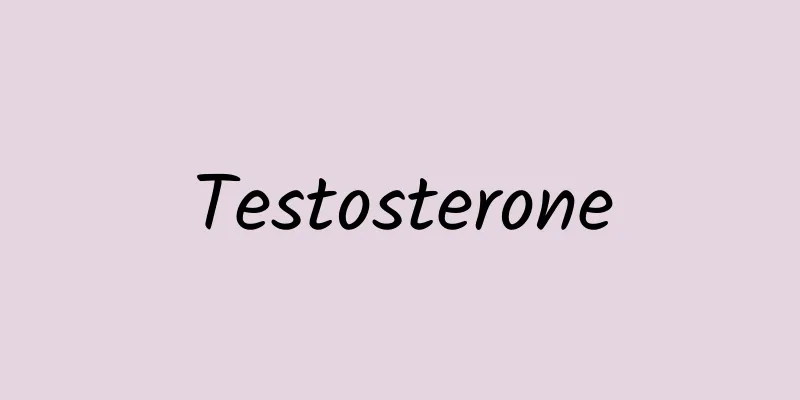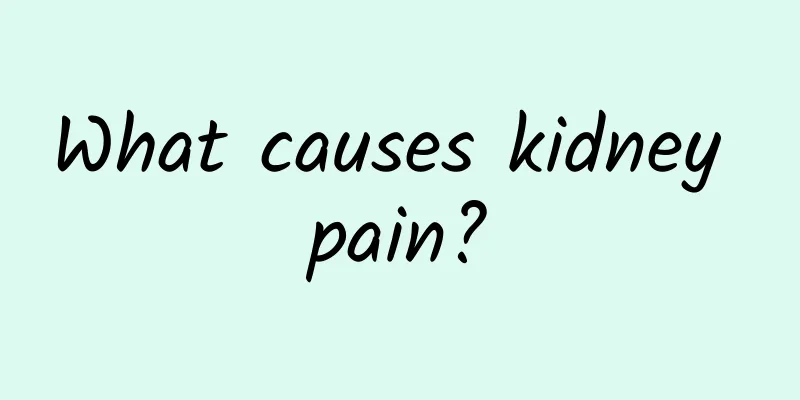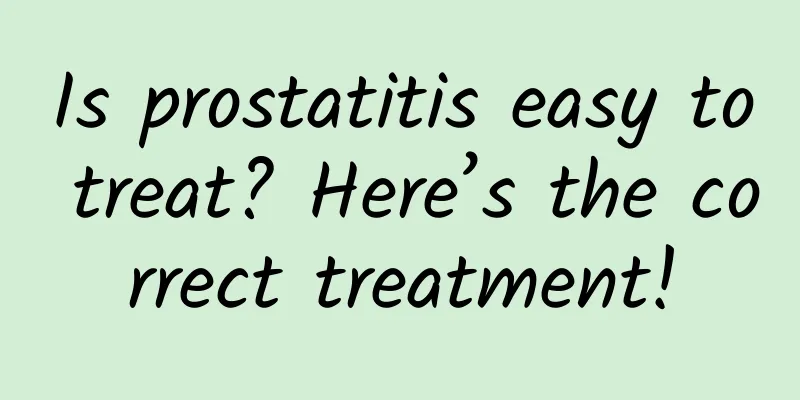What is the best tea for prostatitis?

|
Prostatitis is a common problem among male friends. You must persist in treatment after it occurs. Do not change medications at will during treatment. Frequent changes in medications will make your symptoms more complicated. Not only that, you must also make your sex life more regular and urinate frequently. This is a way to make prostatitis improve faster. 1. Adhere to the treatment and do not change the medicine or treatment method at will during the treatment period, because the relief of symptoms often takes a period of time. Early treatment should be maintained for more than 2 weeks, and some infections need 8 to 12 weeks. If the medicine is changed at will, it is easy to cause bacterial flora imbalance or drug resistance, resulting in incomplete treatment. 2. Have regular sex life, cannot hold back ejaculation, do not masturbate frequently, and avoid unclean sexual intercourse. 3. Correctly understand prostatitis, maintain a good attitude, and reduce psychological pressure to avoid exaggerating symptoms and causing dizziness, memory loss, anxiety, suspicion, insomnia and other symptoms. 4. Drink plenty of water, urinate frequently, keep bowel movements smooth, and insist on hot water sitz baths or hot water bags for the perineum. 5. Avoid smoking, drinking, and spicy food. Avoid sitting for long periods of time, avoid riding a bicycle for long periods of time, insist on exercising, preferably jogging and more lower body exercises, and avoid strenuous exercise. The detection of pathogenic pathogens in prostatic fluid culture is the basis for selecting antibacterial drug treatment. If patients with non-bacterial prostatitis have signs of bacterial infection and general treatment is ineffective, they can also be appropriately treated with antibacterial drugs. When choosing antibacterial drugs, it is necessary to pay attention to the presence of a prostate-blood barrier composed of lipid membranes between the prostate acini and the microcirculation. The barrier prevents the passage of water-soluble antibiotics, greatly reducing the treatment effect. When prostate stones are present, the stones can become a shelter for bacteria. The above factors constitute the difficulty in the treatment of chronic bacterial prostatitis, which requires a longer course of treatment and is prone to recurrence. Currently, quinolone drugs such as ofloxacin or levofloxacin are recommended. If ineffective, continue to use for 8 weeks. If recurrence occurs and the bacterial species remain unchanged, switch to preventive doses to reduce acute attacks and relieve symptoms. If long-term use of antibiotics induces serious side effects such as pseudomembranous colitis, diarrhea, and growth of intestinal resistant strains, the treatment plan needs to be changed. Whether non-bacterial prostatitis is suitable for treatment with antibacterial drugs is still controversial in clinical practice. Patients with "aseptic" prostatitis can also use drugs that are effective against bacteria and mycoplasma, such as quinolone drugs, SMZ-TMP or TMP alone, and tetracycline, quinolone drugs in combination or intermittent use. If antibiotic treatment is ineffective and it is confirmed to be aseptic prostatitis, antibiotic treatment should be discontinued. In addition, using a double balloon catheter to block the prostatic urethra and injecting an antibiotic solution from the urethral cavity into the prostatic duct can also achieve the treatment goal. Type I is mainly treated with broad-spectrum antibiotics, symptomatic treatment and supportive treatment. Type II is recommended to be treated with oral antibiotics, and sensitive drugs are selected. The course of treatment is 4 to 6 weeks, during which the patient should be evaluated for the efficacy. Type III can first take oral antibiotics for 2 to 4 weeks and then evaluate the efficacy. At the same time, non-steroidal anti-inflammatory drugs, α receptor antagonists, M receptor antagonists, etc. are used to improve urination symptoms and pain. Type IV does not require treatment. |
<<: How to prevent epididymitis
>>: What medicine can delay ejaculation?
Recommend
What does it mean when a man has hairy legs?
Many people have discussed the amount of hair, bu...
Frequent masturbation affects fertility
After the sexual function of men matures, they wi...
What to do if the foreskin has an odor
Today we are going to understand what to do if th...
How long does it take for a normal man to ejaculate?
For many women, a man masturbating for more than ...
How to treat high sensitivity of the ghost head
We all know that if a man's glans is too sens...
Treatment for discharge from the penis
The discharge from the penis is indeed a difficul...
Is male impotence caused by kidney deficiency?
Impotence is a symptom that is both familiar and ...
Teach you how to tell if a man doesn’t want to get married from his circle of friends!
When a man gives his true love to a woman, he wil...
What should I do if I suffer from hair loss due to masturbation? How can I treat it?
Many people do not take sudden hair loss seriousl...
How to treat male prostatitis better
Men are no strangers to prostatitis. Prostatitis ...
What is the disease if my right testicle hurts a little?
The testicle is a reproductive organ located in t...
How long is normal sexual life at the age of 40?
Many women think that the duration of a man's...
White spots on foreskin
Whether male or female, you should pay attention ...
What are the symptoms of penile cancer?
Penile cancer is the most common malignant tumor ...
To be a real man, how big a penis should be to be considered normal?
Most men believe that a longer and thicker penis ...









